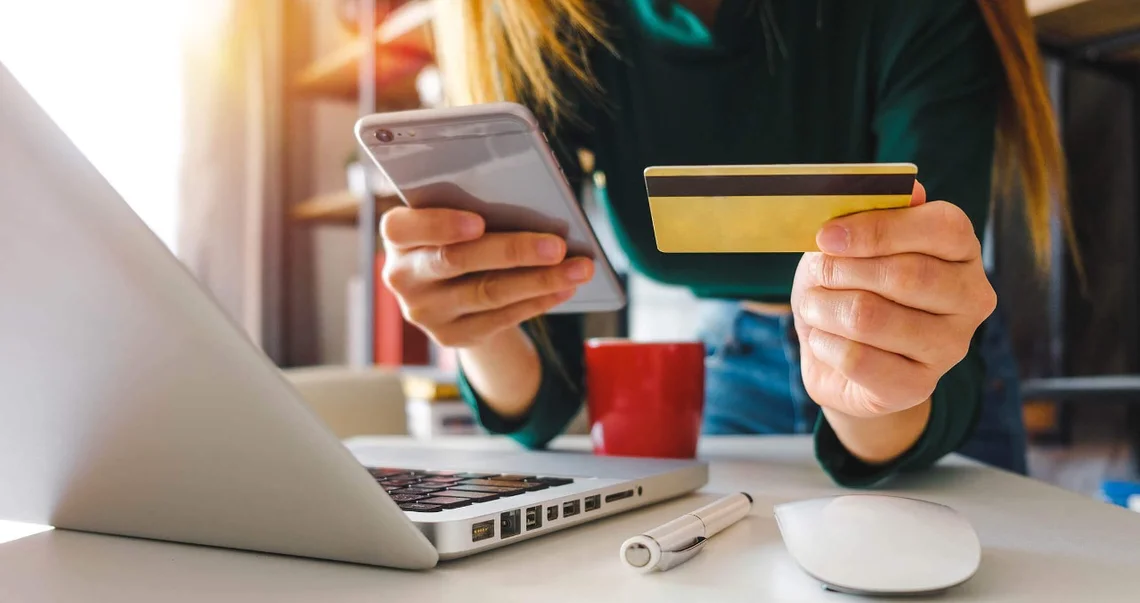Digital banking for business
Seamlessly access all of your accounts from one place with First Citizens Digital Banking for business.
When it comes to managing money, cultivating the right mindset and building your financial literacy are important—but so is using the right money management tools.

Checking accounts have been around for centuries, but the digital revolution has changed them into the modern version we're familiar with today. With digital banking, apps and other mobile features, it's now easier to track your spending, move your money and know your balance in real time. Here's how to manage a checking account using features that are designed to give you more control over your finances.
Put simply, digital banking takes the traditional brick-and-mortar experience you'd have in a bank and transfers it all online. You can use digital banking to open, set up and manage a checking account from anywhere, at any time.
Once you've opened an account, you can track your balance by logging in or setting up account alerts. For example, you can set up an alert to receive email or text notifications when your account balance dips below a certain amount. You also can get security alerts if your bank notices suspicious activity, like if someone tries to access your account from an unusual location or if there are repeated login attempts with the wrong password.
With digital banking, you can see where every dollar is going, understand your spending patterns and use this information to better manage your money.
Having a checking account makes it easier to move money around. You can use your bank's mobile app to schedule bill payments, make credit card or loan payments, and transfer money from your checking account to other accounts at either your primary bank or another financial institution.
It's also simple to safely and securely send money to friends and family using payment apps like Venmo and PayPal. If you want to send a loved one a birthday or graduation gift or split a dinner check with friends, apps like these can provide a simple, convenient way to do so.
Going mobile doesn't only help with transfers—it often makes deposits easier, too. Many digital banking apps support mobile check deposit, which means you can deposit a check by taking a photo of its front and back. This time-saving feature helps you deposit and access funds faster without a trip to the bank.
Services like direct deposit and overdraft protection help to ensure you always have access to funds when you need them.
With direct deposit, you don't have to worry about depositing funds yourself. Instead, money is automatically deposited directly into your account, usually on the same day every week or month. You can set up direct deposit for incoming funds such as your paycheck, pension, Social Security payments, dividend payments from investments or your annual tax refund.
Overdraft protectionD can be beneficial if you accidentally overdraw your account. When this happens, you may not have enough money in your checking account to cover recurring expenses such as utility bills, mortgage, rent or student loan payments, especially if you have automatic payments set up for these bills. With overdraft protection, the bank can allow these transactions to go through, usually for a fee.
Although you only pay for overdraft protection when you use it, if you frequently overdraw your account you may need to take a more proactive approach. Proactive prevention includes tracking your spending and using alerts to monitor when your balance is getting low. You can also link your checking account to your savings account, so if your checking balance goes below a certain threshold your bank automatically transfers money from savings to cover the gap. Although overdraft protection services can be helpful in a pinch, the fees can add up over time, so it's best not to depend on them.
It's never good to be caught off guard, especially when it comes to your finances. Learning how to manage a checking account—especially by taking advantage of features such as digital banking, alerts and overdraft protection—can help you stay on top of your finances and achieve both short- and long-term financial goals.
Email Us
Please select the option that best matches your needs.
Customers with account-related questions who aren't enrolled in Digital Banking or who would prefer to talk with someone can call us directly.